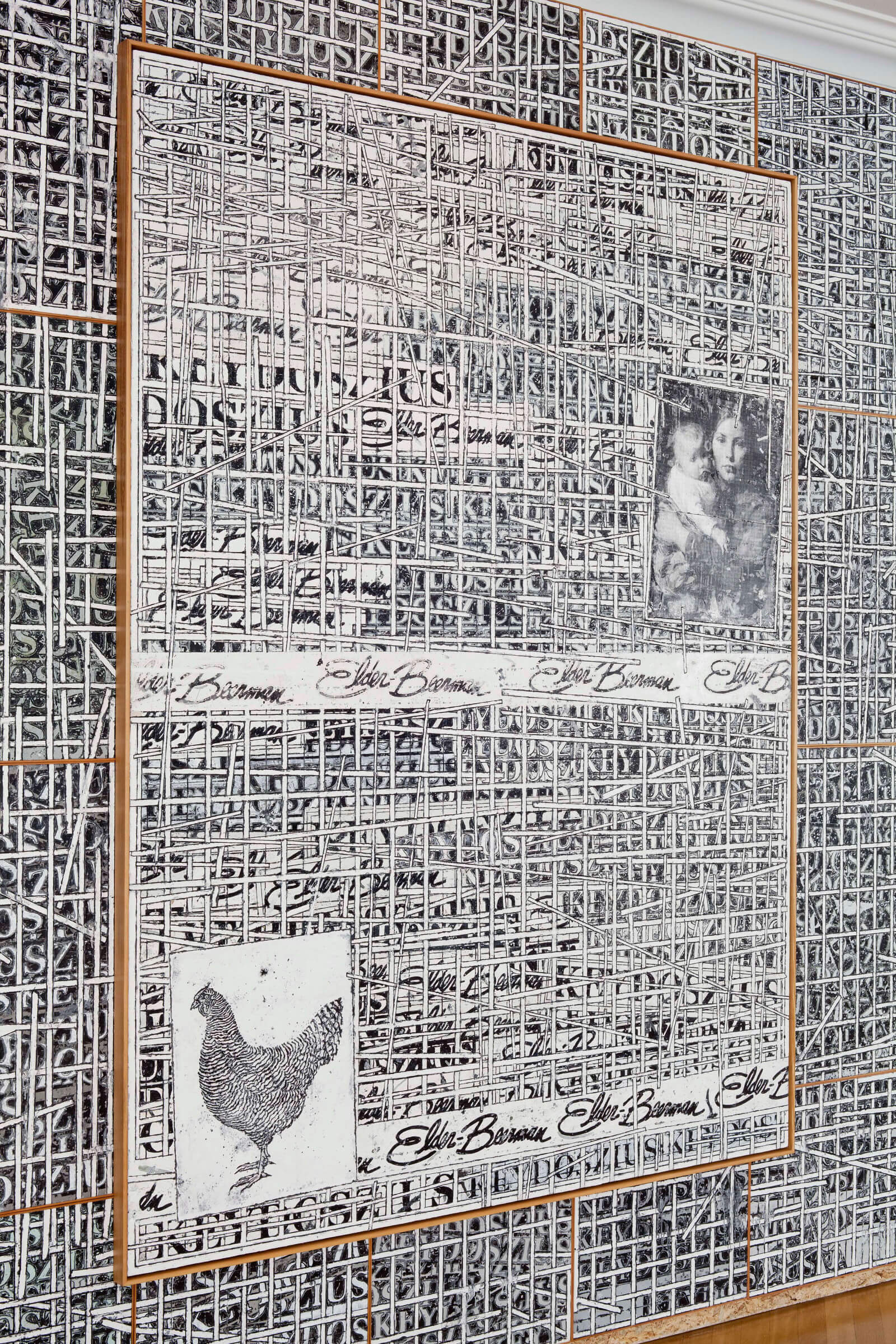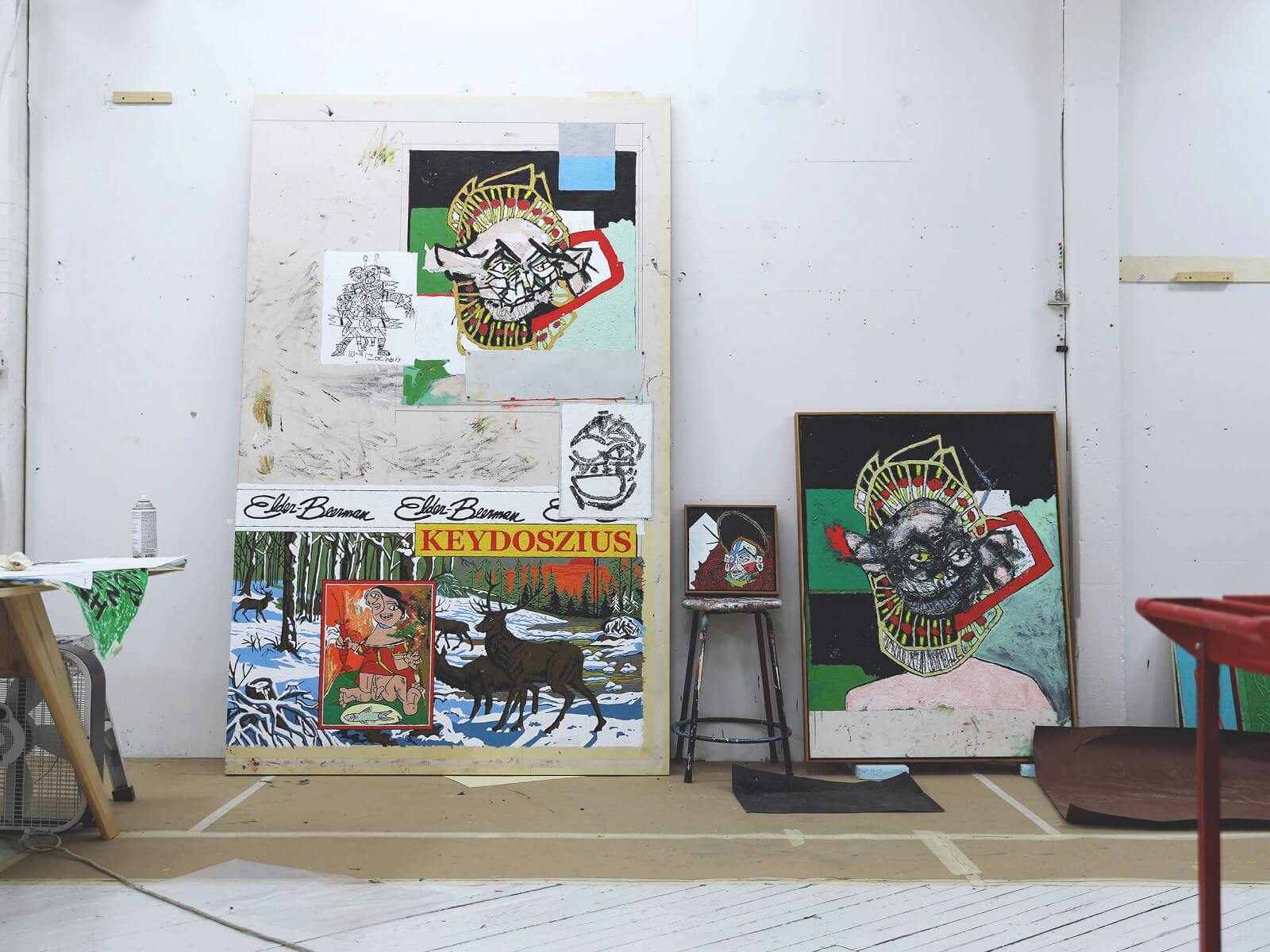Zachary Armstrong
White Lines
➝ German Press Release
➝ Download Press Release
Growing up with an art teacher and ceramist for a father making art was for Zachary Armstong an integral part of his life from the outset. Later on, once he had decided to become a full-time artist, he started to rework his and his brother’s old childhood drawings. In so doing, Armstrong has taken as his starting point a fascination that he shares with the great names of modern art such as Vassily Kandinsky or Pablo Picasso: the inventiveness and originality of children drawing pictures. Armstrong has extracted fundamental elements of these drawings, transformed them through a process of repetition to create new visual worlds.
This interaction with children’s drawings signifying the process of creation seems to resonate within the paintings themselves. This effect is in no small part a result of Armstrong’s particular choice of technique. While many artists many paintings distance the subjects they depict from their physical reality, Armstrong’s use of encaustic has the special effect of melding the depicted subject with the materials depicting it, creating a single, indivisible entity. When he applies the pigmented wax on canvasses he even speaks of “building” his painting. And yet even these structured works provide very little direction for the eye, let alone a clear focal point. Instead, Armstrong’s compositions become increasingly fuzzy, challenging the viewers, requiring their pupils to be in continual motion.
The white stripes in the artist’s latest works provoke a similar reaction, one which is further intensified by the almost endless juxtaposition of various elements. Repetition of images and lettering creates a and simultaneously obstinate visual and verbal vocabulary, bringing the paintings into close dialogue with each other. And yet their message remains puzzlingly vague to the viewer. The works seem to contain a coded message about the person that created them. For example, in one of the exhibited works, the letters “KEYDOSZIUS” represent the maiden name of Armstrong’s mother, interwoven with an art-historically charged depiction of the mother with child. In other works, Americana such as names and images of local shop signs become integral parts of the image, unfolding as a complex interplay of quotations on Armstrong’s canvas. Armstrong draws on global and local contexts, juxtaposing equally-weighted references to high culture, folkloric and commercial elements, replicating his own works and referencing personal narratives.
by Klara Niemann

Additional Information

The point of departure of Zachary Armstrong’s art comes from his own private sphere: his childhood, his family, the American culture, natural history books he encounters. Armstrong’s works seem to contain a coded message about the person who created them, something that becomes evident when a motif is repeated and extended throughout several paintings and series, like a mannerism or a stain that’s part of us. However, while making secret references to his personal universe, his works also evoke some larger context, such as the idea of the American countryside, folk art, and the tradition of American and European modernism, reaching a bigger set of references that points to the universal.
Armstrong’s paintings combine geometrical structures and expressive figuration. One of the most particular aspects of Armstrong’s works is the use of encaustic technique, rendering them sometimes sculptural. Zachary Armstrong was born in 1984 and he currently works and lives in Dayton, Ohio.
Photo: courtesy of the artist
